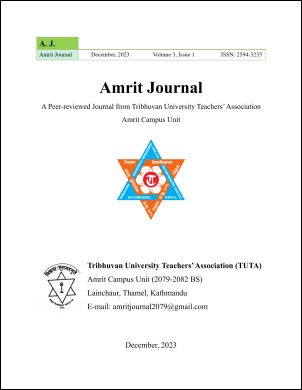Critical Analysis of Surfactant-Dye Interaction: A Review
DOI:
https://doi.org/10.3126/amritj.v3i1.61543Keywords:
Sufactants, dyesAbstract
The interaction between surfactants and dyes is fundamental in achieving the desired coloration and properties in various applications, shaping the functionality and effectiveness of dye-related processes across multiple industries. Further research and advancements in this field will continue contributing to innovative solutions and improved sustainability. While mixed surfactants offer these advantages, the choice between using a single surfactant or a mixture depends on the specific application, the desired properties, cost considerations, and compatibility with other formulation components. It's important to carefully evaluate the application requirements and conduct appropriate testing to determine the most effective approach. In this work, the physical-chemical characteristics and solubilization of reactive dyes in single and mixed micellar media are elaborated. Compared to the single-micellar medium, the mixed-micellar medium showed improved reactive dye trapping, which was attributed to the presence of both cationic and nonionic surfactants, namely cetyltrimethylammonium bromide (CTAB) and triton X-100. In this interactional study, two reactive dyes were used: Reactive Black 5 (RB) and Reactive Yellow 145 (RY). It is noteworthy to examine the modeling and micellization of mixed surfactant systems in an aqueous medium including dodecyl trimethylammonium bromide (DTAB) and sodium dodecyl sulfate (SDS). The anionic-rich and cationic-rich interactions between methylene blue (MB) and methyl orange (MO) in aqueous solutions were clearly shown in the diagram.
Downloads
Downloads
Published
How to Cite
Issue
Section
License
Copyright (c) 2023 Chandradip Kumar Yadav, Ajaya Bhattarai, Tulasi Prasad Niraula, Amar Prasad Yadav, Manoj Kumar Adhikari, Yog Prakash Yadav, Duryodhana Yadav, Sanjay Singh

This work is licensed under a Creative Commons Attribution 4.0 International License.
This license enables reusers to distribute, remix, adapt, and build upon the material in any medium or format, so long as attribution is given to the creator. The license allows for commercial use. Credit must be given to the creator.




